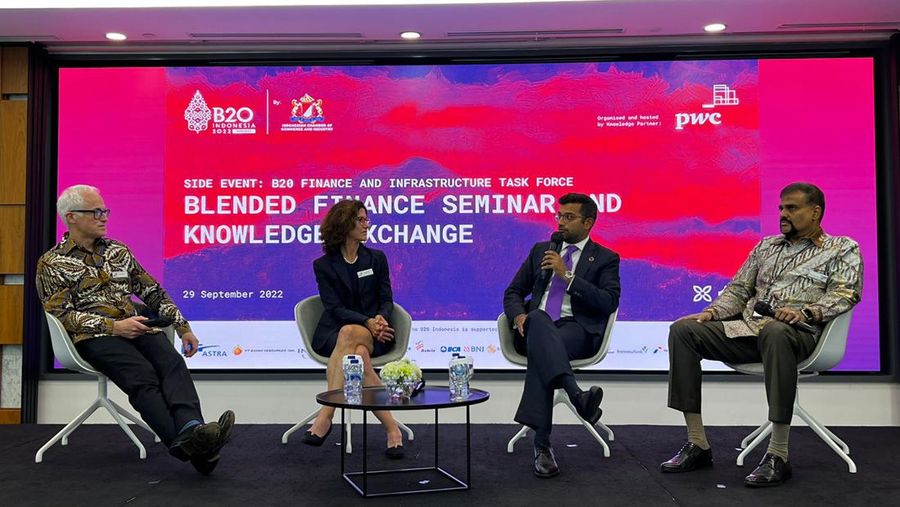
Blended Finance Improves Financing access for Infrastructure

Jakarta, CNBC Indonesia - The B20 Indonesia 2022 Finance and Infrastructure Task Force (F&I TF) has identified that blended finance can close the infrastructure gap. This strategy is widely recognized as a potentially effective way to improve the risk-return profile of transactions and help mobilize private sector funding.
Unfortunately, it has not yet been implemented at a scale significant enough to close the infrastructure gap. The F&I TF has established blended finance as a key area of focus within its policy recommendations to the G20 - specifically under the recommendation of "improving access to affordable and suitable sources of financing for infrastructure".
Blended finance is a structuring approach that allows financing organizations with different objectives to invest or lend alongside each other while achieving their objectives. It can be financial return, social impact, or a combination of both). It entails strategically using catalytic capital from public or philanthropic sources to increase private sector investment for global development impact. However, it is currently underdeveloped and in need of being scaled up significantly, especially in developing countries.
Chair B20 Finance & Infrastructure Task Force, dan CEO di Indonesia Investment Authority Ridha Wirakusumah public and private investments are both important in infrastructure financing. Blended finance combines concessional public finance with non-concessional private finance and expertise from public and private sectors, special-purpose vehicles, non-recourse project financing, risk mitigation instruments, and pooled funding structures. This includes public-private partnerships that lower investment-specific risks and incentives additional private sector finance across key development sectors led by regional, national, and subnational government policies and priorities for sustainable development.
"Careful consideration should also be given to how blended finance instruments are structured because we need development banks, development finance institutions, and other mechanisms like public-private partnerships to harness the true potential of blended finance for sustainable development," he said.
B20 Finance & Infrastructure Task Force Policy Manager and Partner at PwC Indonesia, Radju Munusamy added, for the past 10-15 infrastructure development needed new and innovative approaches to investment that seek to balance financial and social returns. Traditional philanthropists and donors rely more and more on innovative financing schemes to leverage investment finance alongside more traditional development assistance.
"An expanding base of stakeholders - including investors and civil society generally - are now looking to develop and benefit from more energy-efficient and environmentally sustainable built assets, which can be financed through blended finance structures," Radju said.
Convergence Chief Executive Officer Joan M. Larrea said that blended finance can be useful for scaling up infrastructure investments across developing countries. The strategic application of blended finance can ease investor concerns and smooth the transition toward bankable projects.
"To attract large volumes of commercial financing to the infrastructure sector, governments and development partners need to use the full suite of blending approaches and make private capital mobilization a core part of their strategies," he added.
(rah/rah)
[Gambas:Video CNBC]
Next Article Pembiayaan Berkelanjutan Bakal Dibahas di Forum B20-G20


